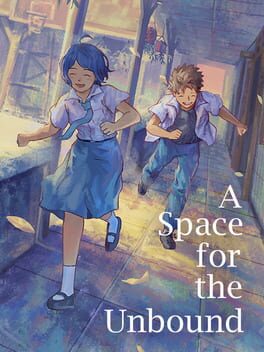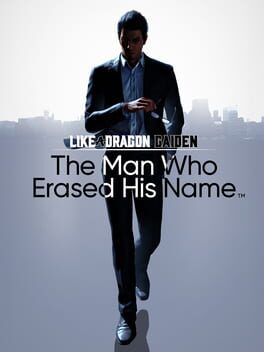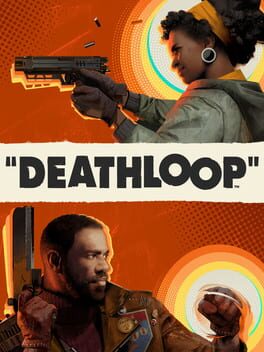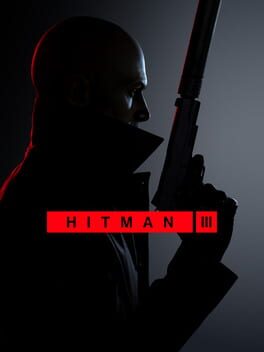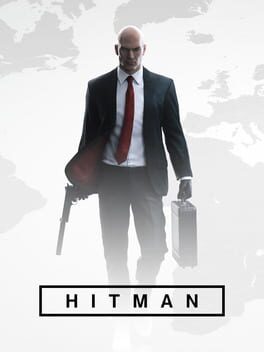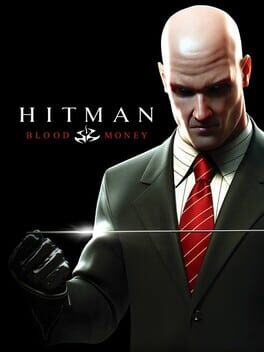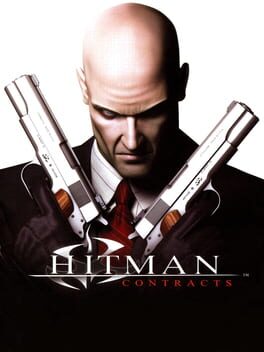thebestmark
I'm pretty much done with these Night in the Woods-esque indies in which the player is left to amble around little towns full of NPCs, but A Space for the Unbound is so good that it erased my fatigue with the format. This Indonesian pastoral YA story is not only heartfelt, but unapologetically human, every bit of its writing and visual art evoking the experiences of real people from real places, even as the plot takes a fantastical Life is Strange turn. Similar to Night in the Woods, this game's story is about people who don't usually get the privilege of having their story told. In an era of increasing alienation between art and artist, from media and the human efforts that produce media, A Space for the Unbound feels all the more special.
This tiniest of entries into the Like a Dragon/Yakuza canon is more or less a full game-sized expansion to Yakuza: Like a Dragon/Like a Dragon 7, or…well, it’s also kind of an official follow up to Yakuza 6/Like a Dragon 6, too. Not confusing at all!
In spite of the fact that The Man Who Erased His Name only exists to give Kiryu one last big-ass action game before the series gets handed off to all the tertiary characters, casting Kiryu as a secret agent/superhero makes for a hell of a game. The antagonists prove to be way more interesting than they appear at first glance, and the new open area they added outside of Sotenbori is bonkers. They put a Las Vegas on a battleship in the middle of the ocean and you can go there to play dress up and lose money at the blackjack table!!! There’s wild stuff going on in this series, I’ll tell you what.
While I don’t have a whole lot to say about where the plot in this one goes, it ties together some story threads that have been left way too loose in the last few entries, and nearly all of the new characters are way more interesting than they have any right to be. Many of the substories are topical this time, seeing Kiryu do battle with the likes of sociopathic Twitch streamers and navigating a near-disaster caused by Chat GPT (you would be amazed how much better-written these sequences are than you might be assuming). Gaiden is ultimately a game of revisitation, though, of palling around an open city with Kiryu one last time and obliterating some 9-year olds at slot car racing competitions. It’s an extremely fun side story, and it finally follows through on some stuff that the last mainline game starring Kiryu failed to.
In spite of the fact that The Man Who Erased His Name only exists to give Kiryu one last big-ass action game before the series gets handed off to all the tertiary characters, casting Kiryu as a secret agent/superhero makes for a hell of a game. The antagonists prove to be way more interesting than they appear at first glance, and the new open area they added outside of Sotenbori is bonkers. They put a Las Vegas on a battleship in the middle of the ocean and you can go there to play dress up and lose money at the blackjack table!!! There’s wild stuff going on in this series, I’ll tell you what.
While I don’t have a whole lot to say about where the plot in this one goes, it ties together some story threads that have been left way too loose in the last few entries, and nearly all of the new characters are way more interesting than they have any right to be. Many of the substories are topical this time, seeing Kiryu do battle with the likes of sociopathic Twitch streamers and navigating a near-disaster caused by Chat GPT (you would be amazed how much better-written these sequences are than you might be assuming). Gaiden is ultimately a game of revisitation, though, of palling around an open city with Kiryu one last time and obliterating some 9-year olds at slot car racing competitions. It’s an extremely fun side story, and it finally follows through on some stuff that the last mainline game starring Kiryu failed to.
This review contains spoilers
Like a Dragon: Ishin! synthesizes historical figures from 19th century Japan with lore from the Like a Dragon series in a manner not entirely dissimilar to, say, The Muppets Christmas Carol. Familiar characters, with their character designs from the other Like a Dragon games left fully intact, are re-contextualized as samurai, politicians and immigrants, creating a bizarre but fascinating game of unpacking signifiers.
The use of, say, Katsunori Takahashi's likeness to portray supporting character Takechi Hanpeita, a likeness which was used to portray a major antagonist in Yakuza 0 named Shibusawa, forces the player to ask questions about not only what Ishin is signifying about Hanpeita, but also what it's signifying backwards into Yakuza 0 about Shibusawa. Ishin! creates a framework for the Like a Dragon player to understand the historical figures by re-using these character models, re-deploying familiar faces so that the player can intuit which characters have which ideological values; however, in doing so, the game is also re-negoatiating the parameters of relationships within the Like a Dragon canon.
Hanpeita/Shibusawa is a particularly interesting example of this double-functioning signifier operation. In Ishin!, Hanpeita is Ryoma's (this game's Kiryu stand-in) sworn brother, a populist political revolutionary who ultimately becomes subsumed by the underhanded ideological power he seeks to overthrow. This is a meaningful derivation from Shibusawa. In Yakuza 0, Shibusawa represented this kind of old-school, might-makes-right individualism that Kiryu becomes the antithesis of. In Ishin!, however, the two actualize an ideological synthesis. Ryoma convinces Hanpeita that the path towards righteousness lies in open opposition rather than subterfuge, and Hanpeita implicitly influences Ryoma - and this part is really fascinating - to abandon his no-kill rule to execute the game's true antagonist, which he proceeds to do.
I'm also fascinated by where Ryoma's character ends up. Like a Dragon games play fast and loose with Kiryu's romantic life. He's had two major love interests in total, one of whom dies, the other annihilated from memory after the second game once the series thinks up increasingly elaborate conspiracies for Kiryu to wrangle. Yet, the series gives Kiryu all these vaguely horny minigames where he leers at women online, or through a camera lens, or whatever. This gives Kiryu this weird 'disinterested lecher' quality. He never sexually consummates his romantic relationships, is what I'm saying, in spite of all the ogling he seems to do. But weirdly, in Ishin, after this version of the character manages to kill another man for the first time, suddenly we're shown this happy ending where he goes off to live with a woman he loves. Is that what it takes to actualize a sexual relationship in the Like a Dragon series? Murdering another man with a phallic object?
Ishin's combat also takes a slightly different tact than previous games - it's slower, more methodical, and more radically different from style to style, one more aspect of the game that encourages you to slow down, take your time, think through what's going on. The hand-to-hand combat is a drastic simplification of classic Like a Dragon combat and the gunplay in this game is largely clunky, relying on weird trick shots to compensate for the fact that, y'know, suddenly this martial artist is holding a handgun. The two swordplay-based styles are really neat, though, particularly the 'wild dancer' style, which sees Ryoma fire off rounds from the pistol while pirouetting all over the place with a katana.
The side quests in this one are also pretty good, particularly the little homemaking simulator Ryoma/Kiryu gets to have with Haruka, a character who does not get a historical counterpart, because this series literally cannot imagine a different role for Haruka other than 'adoptive daughter who is pleasant'; she's is a metaphysically unchangeable entity.
There's a lot of weirdness in this game, and I liked it quite a bit. There's more going on in Ishin! than in the lesser mainline games, and because Ishin! isn't tied to the main storyline, it feels like the developers felt more comfortable with their narrative directly stating its political/ideological positions rather than implying them.
The use of, say, Katsunori Takahashi's likeness to portray supporting character Takechi Hanpeita, a likeness which was used to portray a major antagonist in Yakuza 0 named Shibusawa, forces the player to ask questions about not only what Ishin is signifying about Hanpeita, but also what it's signifying backwards into Yakuza 0 about Shibusawa. Ishin! creates a framework for the Like a Dragon player to understand the historical figures by re-using these character models, re-deploying familiar faces so that the player can intuit which characters have which ideological values; however, in doing so, the game is also re-negoatiating the parameters of relationships within the Like a Dragon canon.
Hanpeita/Shibusawa is a particularly interesting example of this double-functioning signifier operation. In Ishin!, Hanpeita is Ryoma's (this game's Kiryu stand-in) sworn brother, a populist political revolutionary who ultimately becomes subsumed by the underhanded ideological power he seeks to overthrow. This is a meaningful derivation from Shibusawa. In Yakuza 0, Shibusawa represented this kind of old-school, might-makes-right individualism that Kiryu becomes the antithesis of. In Ishin!, however, the two actualize an ideological synthesis. Ryoma convinces Hanpeita that the path towards righteousness lies in open opposition rather than subterfuge, and Hanpeita implicitly influences Ryoma - and this part is really fascinating - to abandon his no-kill rule to execute the game's true antagonist, which he proceeds to do.
I'm also fascinated by where Ryoma's character ends up. Like a Dragon games play fast and loose with Kiryu's romantic life. He's had two major love interests in total, one of whom dies, the other annihilated from memory after the second game once the series thinks up increasingly elaborate conspiracies for Kiryu to wrangle. Yet, the series gives Kiryu all these vaguely horny minigames where he leers at women online, or through a camera lens, or whatever. This gives Kiryu this weird 'disinterested lecher' quality. He never sexually consummates his romantic relationships, is what I'm saying, in spite of all the ogling he seems to do. But weirdly, in Ishin, after this version of the character manages to kill another man for the first time, suddenly we're shown this happy ending where he goes off to live with a woman he loves. Is that what it takes to actualize a sexual relationship in the Like a Dragon series? Murdering another man with a phallic object?
Ishin's combat also takes a slightly different tact than previous games - it's slower, more methodical, and more radically different from style to style, one more aspect of the game that encourages you to slow down, take your time, think through what's going on. The hand-to-hand combat is a drastic simplification of classic Like a Dragon combat and the gunplay in this game is largely clunky, relying on weird trick shots to compensate for the fact that, y'know, suddenly this martial artist is holding a handgun. The two swordplay-based styles are really neat, though, particularly the 'wild dancer' style, which sees Ryoma fire off rounds from the pistol while pirouetting all over the place with a katana.
The side quests in this one are also pretty good, particularly the little homemaking simulator Ryoma/Kiryu gets to have with Haruka, a character who does not get a historical counterpart, because this series literally cannot imagine a different role for Haruka other than 'adoptive daughter who is pleasant'; she's is a metaphysically unchangeable entity.
There's a lot of weirdness in this game, and I liked it quite a bit. There's more going on in Ishin! than in the lesser mainline games, and because Ishin! isn't tied to the main storyline, it feels like the developers felt more comfortable with their narrative directly stating its political/ideological positions rather than implying them.
2021
It’s a shame Boyfriend Dungeon was briefly the discourse du jour, as it shut down conversation around what the game does in favor of what a game in this format should be “allowed” to do. And it does a lot more than you’d think! Boyfriend Dungeon isn’t just a campy, female gaze-y Dream Daddy-like. This game, at its core, is about the full experience of dating. It’s about fleeting encounters, unfolding vulnerabilities, finding your own line between a casual sexual relationship and feeling like you’ve been used. It’s about navigating gaps in age and maturity, making yourself vulnerable for better and for worse. More than anything else, Boyfriend Dungeon is about boundaries: where they are drawn, why they are drawn, the hurt that develops when they are transgressed, and the importance of asserting them.
It’s also a Hades-like dungeon crawler which utilizes the Persona social link system, which is pretty neat. There was some response to this game which indicated a mass displeasure that Boyfriend Dungeon was more than what it appeared to be, which I don’t think I’ve ever seen before. This is a really good game! If nothing else, I think it really captures the bittersweet thrill of short-term romances. And also of obliterating your own anxieties with a small arsenal of medieval weaponry.
It’s also a Hades-like dungeon crawler which utilizes the Persona social link system, which is pretty neat. There was some response to this game which indicated a mass displeasure that Boyfriend Dungeon was more than what it appeared to be, which I don’t think I’ve ever seen before. This is a really good game! If nothing else, I think it really captures the bittersweet thrill of short-term romances. And also of obliterating your own anxieties with a small arsenal of medieval weaponry.
2021
As a prestige racing sim, Forza Horizon 5 is equal to Forza Horizon 4 in many respects. It’s got the same stellar suite of accessibility options, the same impossible balance between arcade thrill and simulation, the same gratuitous dopamine-drip rewards scheme. Forza Horizon 4 was the first racing title I sank serious time into, and I’m happy to echo the same sentiment as everyone else – 5 is a butt-ton of fun, too.
Yet, for all it’s splendor, it’s also a bit...well, it’s a bit much. I appreciate Horizon’s almost creepy desire to placate the player at each and every moment, because the relentless positivity is such a fun mixture with the weight-y, complicated mechanics. However, it turns out, there’s a thin line between relentless positivity and relentless positivity. In the world of Forza Horizon 5, every single person you meet – including the player character, who now has a speaking role in a series first – is your summer camp’s most agonizing youth pastor. Everyone is so chirpy, so irrepressibly gobsmacked by the player. Do anything with a car in Forza Horizon 5, anything at all, and these cult-like freaks will slobber over you with words that sound like compliments but feel like aggravated assault. A woman will lend you her grandfather’s car, ask you to drive it down a road, you’ll instead drive it through a guardrail and into a lake, and she’ll tell you that you are the automotive industry’s gift to mankind as she hands you a $10,000 check. It’s scary, like the entire world of Forza Horizon exists within the fumes of a planetary gas leak.
The moment Forza Horizon 5 goes from annoying to actually infuriating is when you realize they’ve compromised the entire open world experience of their open world game for the sake of AAA presentation – and that their AAA presentation happens to be accompanied by members of The Cult of Forza. Forza Horizon 5 is really, really eager to get you playing it’s epic, dialogue-heavy set piece races, to the extent that you can only squeeze 3-5 regular races/challenges in the open world at any given time before the game will – no joke! – literally slam the emergency break on your car as you’re driving it, slap an event unlock menu on-screen, and shriek, ‘TIME FOR AN EVENT UNLOCK, COMPADRE!’ with an emotional investment in your time that borders on hostility. It feels weird to have to ask, out loud, for a video game to please stop calling you while you are playing itself, but this is the situation.
When it shuts the fuck up, Forza Horizon 5 is a really, really fun time. When it doesn’t shut the fuck up, it's the most unsettling experience of your entire life.
Yet, for all it’s splendor, it’s also a bit...well, it’s a bit much. I appreciate Horizon’s almost creepy desire to placate the player at each and every moment, because the relentless positivity is such a fun mixture with the weight-y, complicated mechanics. However, it turns out, there’s a thin line between relentless positivity and relentless positivity. In the world of Forza Horizon 5, every single person you meet – including the player character, who now has a speaking role in a series first – is your summer camp’s most agonizing youth pastor. Everyone is so chirpy, so irrepressibly gobsmacked by the player. Do anything with a car in Forza Horizon 5, anything at all, and these cult-like freaks will slobber over you with words that sound like compliments but feel like aggravated assault. A woman will lend you her grandfather’s car, ask you to drive it down a road, you’ll instead drive it through a guardrail and into a lake, and she’ll tell you that you are the automotive industry’s gift to mankind as she hands you a $10,000 check. It’s scary, like the entire world of Forza Horizon exists within the fumes of a planetary gas leak.
The moment Forza Horizon 5 goes from annoying to actually infuriating is when you realize they’ve compromised the entire open world experience of their open world game for the sake of AAA presentation – and that their AAA presentation happens to be accompanied by members of The Cult of Forza. Forza Horizon 5 is really, really eager to get you playing it’s epic, dialogue-heavy set piece races, to the extent that you can only squeeze 3-5 regular races/challenges in the open world at any given time before the game will – no joke! – literally slam the emergency break on your car as you’re driving it, slap an event unlock menu on-screen, and shriek, ‘TIME FOR AN EVENT UNLOCK, COMPADRE!’ with an emotional investment in your time that borders on hostility. It feels weird to have to ask, out loud, for a video game to please stop calling you while you are playing itself, but this is the situation.
When it shuts the fuck up, Forza Horizon 5 is a really, really fun time. When it doesn’t shut the fuck up, it's the most unsettling experience of your entire life.
2021
Deathloop is the Arkane game in moderation.
It's got Dishonored's world-class power-set, but only two of the half-dozen or so abilities are usable at a time. This has a two-fold effect: for one, it makes PVP combat more intense by limiting the potential countermoves the player character has. On the other hand, it makes most of the available moves basically null, at least for me. It's really hard to want to experiment with, say, telekinesis or increased damage output when doing so might mean removing blink, a teleportation power than fundamentally improves every aspect of the game experience by making the full gameworld easily navigable.
It's got the same im-sim philosophy of world-building, in which level and narrative design fit in perfect synch with one another, but the verbs available to the player to interact with that space are limited, essentially, to "kill," and even then, "kill" is a heavily conditional concept in the world of Deathloop. In Dishonored, minimizing violence meant minimizing social discord, which, in practice, altered the behavior of NPCs and important characters. In Deathloop, all the unnamed NPCs are quite literally faceless psychopaths who act as fodder to be dispensed of by the player. The only dynamics which change from run to run are the number and placement of NPCs. That's it.
Deathloop's also got the high-concept mashup of parallel aesthetic movements that Dishonored and Prey had. Dishonored mashed steampunk and 19th century-era London together, Prey mashed turn-of-the-century retro-futurism with contemporary sci-fi horror; Deathloop combines the color and candor of hypercolorful 1960's pop art with the contemporary James Bond film. I think Deathloop features a more inspired combination of aesthetic traits, for its part, but it's a shame that it's style gets personified by probably the weakest cast of antagonists in the studios history.
Most disappointingly, Deathloop borrows from Prey: Mooncrash's run-based, rogue-like structure, and limits the potential of that game's systems rather than expanding on them. Whereas Mooncrash placed hard limitations on a given character's abilities and provided progressive challenges from one run to the next, Deathloop, in spite of using the narrative framework of an endless timeloop, actually ends up making a more linear experience than it's expansion pack-based forebear.
Mooncrash encouraged me to utilize the full suite of combat and movement options at my disposal to finally complete a 'perfect' run, and had a genuinely interesting narrative framework to justify it's repetition. Because Mooncrash randomized so much of the game's various threats and obstacles, each run felt totally distinct from the next, particularly once the difficulty started ramping up.
Deathloop, by contrast, is all about leveling up so many moves and weapons that the nature of the run-based format no longer matters. To win at Deathloop, the player doesn't need to use ingenuity or craft unique solutions to the problems presented to them; ;rather, the player essentially eliminates choice by making a hyper-functional set of equipment and finding the 'correct' set of circumstances which the game necessitates to earn the ending.
All in all, I liked Deathloop - at least, I liked it up to the point where it made good on its potential as a AAA roguelike or an Arkane immersive sim. It's Dishonored, but only a little, and so I liked it only a little. Really, it's like bowling with the bumper lanes on. It's fun but the process is practically automated.
It's got Dishonored's world-class power-set, but only two of the half-dozen or so abilities are usable at a time. This has a two-fold effect: for one, it makes PVP combat more intense by limiting the potential countermoves the player character has. On the other hand, it makes most of the available moves basically null, at least for me. It's really hard to want to experiment with, say, telekinesis or increased damage output when doing so might mean removing blink, a teleportation power than fundamentally improves every aspect of the game experience by making the full gameworld easily navigable.
It's got the same im-sim philosophy of world-building, in which level and narrative design fit in perfect synch with one another, but the verbs available to the player to interact with that space are limited, essentially, to "kill," and even then, "kill" is a heavily conditional concept in the world of Deathloop. In Dishonored, minimizing violence meant minimizing social discord, which, in practice, altered the behavior of NPCs and important characters. In Deathloop, all the unnamed NPCs are quite literally faceless psychopaths who act as fodder to be dispensed of by the player. The only dynamics which change from run to run are the number and placement of NPCs. That's it.
Deathloop's also got the high-concept mashup of parallel aesthetic movements that Dishonored and Prey had. Dishonored mashed steampunk and 19th century-era London together, Prey mashed turn-of-the-century retro-futurism with contemporary sci-fi horror; Deathloop combines the color and candor of hypercolorful 1960's pop art with the contemporary James Bond film. I think Deathloop features a more inspired combination of aesthetic traits, for its part, but it's a shame that it's style gets personified by probably the weakest cast of antagonists in the studios history.
Most disappointingly, Deathloop borrows from Prey: Mooncrash's run-based, rogue-like structure, and limits the potential of that game's systems rather than expanding on them. Whereas Mooncrash placed hard limitations on a given character's abilities and provided progressive challenges from one run to the next, Deathloop, in spite of using the narrative framework of an endless timeloop, actually ends up making a more linear experience than it's expansion pack-based forebear.
Mooncrash encouraged me to utilize the full suite of combat and movement options at my disposal to finally complete a 'perfect' run, and had a genuinely interesting narrative framework to justify it's repetition. Because Mooncrash randomized so much of the game's various threats and obstacles, each run felt totally distinct from the next, particularly once the difficulty started ramping up.
Deathloop, by contrast, is all about leveling up so many moves and weapons that the nature of the run-based format no longer matters. To win at Deathloop, the player doesn't need to use ingenuity or craft unique solutions to the problems presented to them; ;rather, the player essentially eliminates choice by making a hyper-functional set of equipment and finding the 'correct' set of circumstances which the game necessitates to earn the ending.
All in all, I liked Deathloop - at least, I liked it up to the point where it made good on its potential as a AAA roguelike or an Arkane immersive sim. It's Dishonored, but only a little, and so I liked it only a little. Really, it's like bowling with the bumper lanes on. It's fun but the process is practically automated.
2021
This review contains spoilers
I’ve been a Hitman diehard since Hitman: Contracts on the PS2, so the proliferation of the series since 2016 has been fun to watch. The popular perception of Hitman as pulp or as comedy, though – while understandable and even insightful as an interpretive lens – has obscured some of the series’ other clever narrative tricks. I think this is something that people miss, but IO interactive have been experimenting with a very similar gameplay tool-set for over twenty years now, and have applied that tool-set towards a wide variety of incidental little stories. People often say that the plot doesn’t matter in a Hitman game, and I understand where they’re coming from, but that doesn’t mean narrative doesn’t matter in a Hitman game.
I feel particularly strongly about this after having read critical perspectives on Hitman III, which refer to the game as a boilerplate spy thriller with sandbox parts - a logical perspective if you’re the kind of player who completes each Hitman level exactly once. There’s nothing wrong with that interpretation, to be clear, but approaching the series as a linear campaign is a bit like eating one course in a five-course meal. Hitman games are miniature libraries of discrete puzzle boxes designed for perpetual re-examination. The format of the puzzle boxes, and the possibilities granted to the player, are not only functional gameplay elements, but also narrative elements. “What will [SPECIFIC NPC] do if I intervene with [SPECIFIC LEVEL ELEMENT]?” is the kind of question the Hitman series rewards in big, objective-completing ways, and in smaller, more personable ways. You can get to know most anyone in a Hitman map – you can hit the gym with some guards in Hokkaido, have a conversation with a stranger about the nature of friendship in Chongqing, do shots with a target in Miami, and sell drugs to the globe-trotting Florida Man in Berlin. In fact, you can even get to know NPCs’ full names if you start a level in contracts mode. There are hundreds of miniature stories like these in a Hitman map, many of which have their own little variable states based on the actions of the player.
So: allow me to extrapolate some of the 'structural' narrative which I feel was missed from this final game in the World of Assassination trilogy. Here's the thesis: Hitman III is a deconstruction of the entire Hitman series as we‘ve come to know it. It re-casts the player in roles which are increasingly functionally and narratively opposite of the series’ premise to fascinating results, up to and including the generally disliked final chapter. In a series that emphasized story – like, say, the similarly-intentioned Metal Gear Solid 4 – it would be better understood by these merits, and (I think) better appreciated.
Here’s a brief level-by-level breakdown. Spoilers below.
Dubai, the first map, presents the player with two traditional Hitman targets in a traditional Hitman setting. The player is tasked with eliminating a mega-rich, politically conservative oil baron who abuses service workers in his private suite. The other target is an incompetent, albeit more sympathetic, cog in the machine of the economic elite. The setting is a comically enormous golden tower in Dubai. The set piece kills all emphasize direct action on the player’s part (i.e. there are fewer obvious indirect methods of assassination). The Hitman formula is introduced in its most basic form.
Dartmoor is, in some respects, an antithesis to the first level. The Dubai tower is a glistening, grotesque example of wealth hoarding that the player debases, a space occupied by untouchable people too enraptured in their own success to see failure approach. Dartmoor is the introduction of consequence, for both the player and for the player’s targets. The level features a picturesque mansion obscured by permanent fog, and is set a day after the untimely death of one of the mansion’s occupants, who have hired a private investigator to determine which of them committed the murder. Dartmoor’s target, unlike Dubai’s targets, is aware that her time as a power broker is coming to an end and is resigned to her fate. Every element of the map exists under the shadow of a destructive act.
While Dartmoor is as flexible a map as Dubai and rewards a variety of play-styles, it heavily emphasizes one approach above all others: the player is able to remove the private investigator from the map and take his place, effectively turning Hitman into a murder mystery adventure game which culminates, itself, in a murder. In a sense, the player is literally tasked with reveling in the aftermath of an event similar to the first mission's assassinations, and the aftermath of every assassination in the series up to this point. To complete the set piece event in the Dartmoor map is to comprehend the immediate consequence of 47’s actions writ large. This is not to say that ‘did you know that when someone dies there are consequences’ is an act of brilliance, but in a series predicated on righteous slaughter, a sudden tonal shift towards the question of death feels meaningful.
Berlin, Hitman III’s best and most ingenious level, further subverts the Hitman formula. In the Berlin map, the player is hunted by 11 disguised NPCs who will recognize 47 regardless of his outfit. While Hitman III is the easiest and most friendly Hitman game in the series by quite a wide margin, here it is unusually stringent – mission stories and target highlighting is not available on a first playthrough, meaning the player is forced to act cautiously, as prey rather than predator. All of this happens during a rave, and it’s probably the most singularly thrilling experience in the series so far. The player has gone from killer, to coroner, to potential victim. Our understanding of 47 and his relationship to the world has been compromised.
Chongqing, an oddly demure, easily completed challenge compared to Berlin, makes explicit in the narrative what has so far been implicit in the game design. The targets in Chongqing are technobabbling psychopaths, but this time they’re members of the ICA, the agency which directs 47 to his targets. While Chongqing is a straightforward Hitman map from a gameplay perspective, it is anything but from a narrative perspective: the final objective given to the player is to permanently dismantle the ICA, thereby permanently dismantling the fantastical Hitman premise in the process.
And then there’s Mendoza: one last old-school Hitman experience before the end, replete with an extravagant 1%-er setting and two transparently complicit tools of the elite to dispatch (although in this case one of the targets is a lot worse than the other). But even here, Hitman III is not straightforward. Mendoza is the culmination of the ‘cause and effect’ theme from the rest of the game, as well as a celebration of the trilogy in miniature. Side characters from other missions in the trilogy re-appear here, alongside discrete set piece assassination options from their respective levels which are re-contextualized for the finale, and they discuss how their lives have changed since the events of their respective missions occurred. Other NPCs explicitly speculate as to the outcomes from past missions. During one particularly gruesome set piece, 47 will casually reference events from Hitman: Blood Money, foreshadowing Hitman III’s forthcoming twist, reinforcing the idea that this last sequence of events is not only consequential for this trilogy, but for the series as we know it. The actions of the player throughout Hitman have culminated here, in a self-referential soiree, and yet the structure which protects the antagonistic elite, the leaders of whom having been mathematically eliminated, still remains intact. But that doesn’t mean there’s not a job to do. You can’t stop the party from being thrown, but you can decide who will be allowed to survive it.
Finally, we have Carpathian Mountains, a completely linear level in a game about non-linearity. This level caught most new players by surprise, but it made the entire Hitman III experience click for me. It used to be that Hitman games would climax in one huge, guns-blazing John Wick sequence which would not end until all NPCs were removed from the board – OR, they would end in a final, restrictive sequence like this one. In this sense, the Carpathian Mountains stage is a remix of every Hitman finale up to now. The game goes to great lengths to assert that 47, under the effects of a mind-altering substance, is attempting to retain his self-image on his own terms; perhaps, for the first time in his entire life, he has even bothered to consider that self-image. The player is then presented with either a Nathan Drake-like rampage, in which all of the NPCs are wiped off the board like the good old days back on the PS2, or a slow, carefully-plotted stealth sequence in which everyone, even the main target – in a series first – is spared. The player has been introduced once again to the premise, then forcibly made to observe the outcome for the targets, and then been made aware that the end result stops short of winning a wide-ranging systemic change. Carpathian Mountains gives the player the opportunity, then, to decide what the best next step is, or maybe what it all meant in the first place. Maybe that‘s not the fun toybox we usually get in the new-style Hitman games, sure – but as a narrative conclusion, it allows the player to dictate the meaning of the experience in some way, to “sandbox” the narrative climax, if you will.
Hitman III is endlessly fascinating to me this way, and when I play it, I find myself considering it’s broader themes beyond the normal Hitman tropes I’ve come to love over the years. It’s the product of a studio seeking to explore the meaning inherent to their work, even if it leaves lingering unanswered questions, and as a result, it really resonated with me when the game launched in 2021, because hey, me too. In an era of perpetual catastrophe, considering meaning in art feels aggravatingly abstract, even pointless. IO’s intellectual distance from its own series, its willingness to subvert the premise of its biggest hit, its ambition to depict some level of complexity in its game about class disparity, a game which has up until now felt so comfortable offering a cartoon catharsis via the cartoon-murder of its various 1%-er analogues, is an evolution for the studio. Considering IO’s next project will be another mass media adaptation in a medium increasingly full of them, I’m grateful IO was so willing to explore its own work from such a complex and oblique angle. Besides ending their best run of games yet on a high-note, they were able to enrich their entire body of work, too.
I feel particularly strongly about this after having read critical perspectives on Hitman III, which refer to the game as a boilerplate spy thriller with sandbox parts - a logical perspective if you’re the kind of player who completes each Hitman level exactly once. There’s nothing wrong with that interpretation, to be clear, but approaching the series as a linear campaign is a bit like eating one course in a five-course meal. Hitman games are miniature libraries of discrete puzzle boxes designed for perpetual re-examination. The format of the puzzle boxes, and the possibilities granted to the player, are not only functional gameplay elements, but also narrative elements. “What will [SPECIFIC NPC] do if I intervene with [SPECIFIC LEVEL ELEMENT]?” is the kind of question the Hitman series rewards in big, objective-completing ways, and in smaller, more personable ways. You can get to know most anyone in a Hitman map – you can hit the gym with some guards in Hokkaido, have a conversation with a stranger about the nature of friendship in Chongqing, do shots with a target in Miami, and sell drugs to the globe-trotting Florida Man in Berlin. In fact, you can even get to know NPCs’ full names if you start a level in contracts mode. There are hundreds of miniature stories like these in a Hitman map, many of which have their own little variable states based on the actions of the player.
So: allow me to extrapolate some of the 'structural' narrative which I feel was missed from this final game in the World of Assassination trilogy. Here's the thesis: Hitman III is a deconstruction of the entire Hitman series as we‘ve come to know it. It re-casts the player in roles which are increasingly functionally and narratively opposite of the series’ premise to fascinating results, up to and including the generally disliked final chapter. In a series that emphasized story – like, say, the similarly-intentioned Metal Gear Solid 4 – it would be better understood by these merits, and (I think) better appreciated.
Here’s a brief level-by-level breakdown. Spoilers below.
Dubai, the first map, presents the player with two traditional Hitman targets in a traditional Hitman setting. The player is tasked with eliminating a mega-rich, politically conservative oil baron who abuses service workers in his private suite. The other target is an incompetent, albeit more sympathetic, cog in the machine of the economic elite. The setting is a comically enormous golden tower in Dubai. The set piece kills all emphasize direct action on the player’s part (i.e. there are fewer obvious indirect methods of assassination). The Hitman formula is introduced in its most basic form.
Dartmoor is, in some respects, an antithesis to the first level. The Dubai tower is a glistening, grotesque example of wealth hoarding that the player debases, a space occupied by untouchable people too enraptured in their own success to see failure approach. Dartmoor is the introduction of consequence, for both the player and for the player’s targets. The level features a picturesque mansion obscured by permanent fog, and is set a day after the untimely death of one of the mansion’s occupants, who have hired a private investigator to determine which of them committed the murder. Dartmoor’s target, unlike Dubai’s targets, is aware that her time as a power broker is coming to an end and is resigned to her fate. Every element of the map exists under the shadow of a destructive act.
While Dartmoor is as flexible a map as Dubai and rewards a variety of play-styles, it heavily emphasizes one approach above all others: the player is able to remove the private investigator from the map and take his place, effectively turning Hitman into a murder mystery adventure game which culminates, itself, in a murder. In a sense, the player is literally tasked with reveling in the aftermath of an event similar to the first mission's assassinations, and the aftermath of every assassination in the series up to this point. To complete the set piece event in the Dartmoor map is to comprehend the immediate consequence of 47’s actions writ large. This is not to say that ‘did you know that when someone dies there are consequences’ is an act of brilliance, but in a series predicated on righteous slaughter, a sudden tonal shift towards the question of death feels meaningful.
Berlin, Hitman III’s best and most ingenious level, further subverts the Hitman formula. In the Berlin map, the player is hunted by 11 disguised NPCs who will recognize 47 regardless of his outfit. While Hitman III is the easiest and most friendly Hitman game in the series by quite a wide margin, here it is unusually stringent – mission stories and target highlighting is not available on a first playthrough, meaning the player is forced to act cautiously, as prey rather than predator. All of this happens during a rave, and it’s probably the most singularly thrilling experience in the series so far. The player has gone from killer, to coroner, to potential victim. Our understanding of 47 and his relationship to the world has been compromised.
Chongqing, an oddly demure, easily completed challenge compared to Berlin, makes explicit in the narrative what has so far been implicit in the game design. The targets in Chongqing are technobabbling psychopaths, but this time they’re members of the ICA, the agency which directs 47 to his targets. While Chongqing is a straightforward Hitman map from a gameplay perspective, it is anything but from a narrative perspective: the final objective given to the player is to permanently dismantle the ICA, thereby permanently dismantling the fantastical Hitman premise in the process.
And then there’s Mendoza: one last old-school Hitman experience before the end, replete with an extravagant 1%-er setting and two transparently complicit tools of the elite to dispatch (although in this case one of the targets is a lot worse than the other). But even here, Hitman III is not straightforward. Mendoza is the culmination of the ‘cause and effect’ theme from the rest of the game, as well as a celebration of the trilogy in miniature. Side characters from other missions in the trilogy re-appear here, alongside discrete set piece assassination options from their respective levels which are re-contextualized for the finale, and they discuss how their lives have changed since the events of their respective missions occurred. Other NPCs explicitly speculate as to the outcomes from past missions. During one particularly gruesome set piece, 47 will casually reference events from Hitman: Blood Money, foreshadowing Hitman III’s forthcoming twist, reinforcing the idea that this last sequence of events is not only consequential for this trilogy, but for the series as we know it. The actions of the player throughout Hitman have culminated here, in a self-referential soiree, and yet the structure which protects the antagonistic elite, the leaders of whom having been mathematically eliminated, still remains intact. But that doesn’t mean there’s not a job to do. You can’t stop the party from being thrown, but you can decide who will be allowed to survive it.
Finally, we have Carpathian Mountains, a completely linear level in a game about non-linearity. This level caught most new players by surprise, but it made the entire Hitman III experience click for me. It used to be that Hitman games would climax in one huge, guns-blazing John Wick sequence which would not end until all NPCs were removed from the board – OR, they would end in a final, restrictive sequence like this one. In this sense, the Carpathian Mountains stage is a remix of every Hitman finale up to now. The game goes to great lengths to assert that 47, under the effects of a mind-altering substance, is attempting to retain his self-image on his own terms; perhaps, for the first time in his entire life, he has even bothered to consider that self-image. The player is then presented with either a Nathan Drake-like rampage, in which all of the NPCs are wiped off the board like the good old days back on the PS2, or a slow, carefully-plotted stealth sequence in which everyone, even the main target – in a series first – is spared. The player has been introduced once again to the premise, then forcibly made to observe the outcome for the targets, and then been made aware that the end result stops short of winning a wide-ranging systemic change. Carpathian Mountains gives the player the opportunity, then, to decide what the best next step is, or maybe what it all meant in the first place. Maybe that‘s not the fun toybox we usually get in the new-style Hitman games, sure – but as a narrative conclusion, it allows the player to dictate the meaning of the experience in some way, to “sandbox” the narrative climax, if you will.
Hitman III is endlessly fascinating to me this way, and when I play it, I find myself considering it’s broader themes beyond the normal Hitman tropes I’ve come to love over the years. It’s the product of a studio seeking to explore the meaning inherent to their work, even if it leaves lingering unanswered questions, and as a result, it really resonated with me when the game launched in 2021, because hey, me too. In an era of perpetual catastrophe, considering meaning in art feels aggravatingly abstract, even pointless. IO’s intellectual distance from its own series, its willingness to subvert the premise of its biggest hit, its ambition to depict some level of complexity in its game about class disparity, a game which has up until now felt so comfortable offering a cartoon catharsis via the cartoon-murder of its various 1%-er analogues, is an evolution for the studio. Considering IO’s next project will be another mass media adaptation in a medium increasingly full of them, I’m grateful IO was so willing to explore its own work from such a complex and oblique angle. Besides ending their best run of games yet on a high-note, they were able to enrich their entire body of work, too.
2018
Hitman 2, the best game in the World of Assassination trilogy, uses the momentum of its prequel to take some huge swings on both a conceptual level and a design level. After a brief tone-setting mission set in a combatant-occupied beach house, Hitman 2 reveals itself as a tour de force of what the Hitman series can do. The ticking-clock of the Miami Indy 500 race, the dense crowds and ramshackle fortresses of the Mumbai level, the creepy, uncanny valley quality of the Vermont suburb, the ridiculously escalatory nature of the evil within Isle of Sgail - these are all-timer Hitman levels, providing their own interesting problems to solve, containing hundreds of thematically-dense little narrative details.
This is what I love about these games the most, and why Hitman 2, in particular, sticks out to me. Despite the organic, reactive feel of Hitman's maps, all of them possess an extraordinary intentionality. There is no 'filler' content in a these levels, because even the parts of the maps that don't directly affect gameplay do possess information relevant to the narrative. On a smaller map that lacks big crowds like the Vermont suburb, there literally are no generic NPCs. If you go up to the most non-descript NPC in that level and follow them around, they do have some unique quality or express something about the world in some way. Notably, many of the enforcers on that map are just random Americans - if the player opens fire in broad view of the public, the random suburbanites on that map reveal that they're concealed carrying, like, M16s under their polo shirts.
I've always felt like The World of Assassination's story is underappreciated, considering how driven these games are to express a perspective. Hitman 2, specifically, is a game with a coherent point of view that is unambiguous. The theme of class war, of an anonymized underclass who perform labor for a few sociopaths at the top of the food chain - of dinghy servants' quarters contrasted against lavish master bedrooms and executive offices - is more pronounced here than in the first game. The repetition of this theme climaxes within the Isle of Sgail, a level featuring a castle full of the ultra-rich who are plotting to commodify the impending collapse of the Earth's climate.
This is what I love about these games the most, and why Hitman 2, in particular, sticks out to me. Despite the organic, reactive feel of Hitman's maps, all of them possess an extraordinary intentionality. There is no 'filler' content in a these levels, because even the parts of the maps that don't directly affect gameplay do possess information relevant to the narrative. On a smaller map that lacks big crowds like the Vermont suburb, there literally are no generic NPCs. If you go up to the most non-descript NPC in that level and follow them around, they do have some unique quality or express something about the world in some way. Notably, many of the enforcers on that map are just random Americans - if the player opens fire in broad view of the public, the random suburbanites on that map reveal that they're concealed carrying, like, M16s under their polo shirts.
I've always felt like The World of Assassination's story is underappreciated, considering how driven these games are to express a perspective. Hitman 2, specifically, is a game with a coherent point of view that is unambiguous. The theme of class war, of an anonymized underclass who perform labor for a few sociopaths at the top of the food chain - of dinghy servants' quarters contrasted against lavish master bedrooms and executive offices - is more pronounced here than in the first game. The repetition of this theme climaxes within the Isle of Sgail, a level featuring a castle full of the ultra-rich who are plotting to commodify the impending collapse of the Earth's climate.
2016
I bought Hitman as soon as the Paris map was released, and I've sort of just never stopped playing it. This soft reboot of the series takes the sandbox level design of the older games and dramatically increases the scale, filling each environment with discrete NPCs and little important details about the world. The implicit class commentary in the older games is made explicit in this one; all 47 needs to become invisible to his wealthy targets is to wear the outfit of a service worker.
A huge amount of the gameplay in Hitman consists of the player obtaining a work uniform of some kind and observing a target, or someone associated with a target, and discerning both their schedule and their motivations. Each target has a number of ironic, narratively-appropriate, cinematic kills attached to them, and because Hitman levels are designed to be replayed over and over again, your sort of always getting to know the targets and the people surrounding them more and more intimately, each interruption you make into their schedules revealing more and more specific information. Each Hitman level is therefore like a spy novel-puzzle box, where narrative and gameplay are always neatly in sync with one another. An all-timer.
A huge amount of the gameplay in Hitman consists of the player obtaining a work uniform of some kind and observing a target, or someone associated with a target, and discerning both their schedule and their motivations. Each target has a number of ironic, narratively-appropriate, cinematic kills attached to them, and because Hitman levels are designed to be replayed over and over again, your sort of always getting to know the targets and the people surrounding them more and more intimately, each interruption you make into their schedules revealing more and more specific information. Each Hitman level is therefore like a spy novel-puzzle box, where narrative and gameplay are always neatly in sync with one another. An all-timer.
2015
Conceptually, Hitman: Sniper is genius. A mobile game trying to capture a Hitman level, in all of its clockwork glory, would need to do so without relying on audio cues or a complex system of movement, so placing the player permanently at sniper distance was the right move. The game's bonkers ragdoll physics are a fun touch, too, and I think it speaks volumes that Hitman 2 was able to essentially sequal-ize this game in its DLC without that feeling super weird. The rest of the mobile game design is what ultimately drags this one down, though. Ridiculous exp grinds, a zillion gun upgrades, and zombie DLC are way out of sync with what the rest of the series is doing.
2014
Captures the austere atmosphere and tension of the original Hitman games, if not the fixation with living spaces that makes the games so interesting. Putting the Hitman series in the context of a board game is inspired, though, as the detached, clinical quality of the gameplay makes for a more natural fit than the Tomb Raider or Deus Ex sequels that came after. Beautifully drawn art style, too.
2012
A combination of grindhouse exploitation cinema and a Jason Bourne knockoff thriller, Absolution is the dumbest Hitman game by a wide margin. The vibes start off badly right away, as the first thing the game decides to do is to face-reveal Diana - a character who, up to this point, is 47's only human companion - by putting her in a nude scene before having 47 apparently shoot her to death. Then, the game dad-ifies 47, having him adopt a genetically-modified assassin-child from an orphanage only for her to disappear from the series before the game even ends.
Thing is, Absolution isn't a bad game, in total. It's sort of The Legend of Zelda: Skyward Sword of the Hitman series. A lot of the mechanics people liked from the World of Assassination trilogy are developed here, the lore of the series gets a little more developed, but in and of itself it feels clunky and out of synch with the other games.
The bits where 47 has to use his skillset to escape pursuers are pretty fun, although the checkpoint/save system is abysmal. I dunno. It's not all bad. Sometimes Absolution blossoms into a traditional Hitman level and that's usually where the game starts to click into place. But then I remember this is the game where 47 shoots sexy battle nuns to death in a corn field and the good bits seem a little bit less good.
Thing is, Absolution isn't a bad game, in total. It's sort of The Legend of Zelda: Skyward Sword of the Hitman series. A lot of the mechanics people liked from the World of Assassination trilogy are developed here, the lore of the series gets a little more developed, but in and of itself it feels clunky and out of synch with the other games.
The bits where 47 has to use his skillset to escape pursuers are pretty fun, although the checkpoint/save system is abysmal. I dunno. It's not all bad. Sometimes Absolution blossoms into a traditional Hitman level and that's usually where the game starts to click into place. But then I remember this is the game where 47 shoots sexy battle nuns to death in a corn field and the good bits seem a little bit less good.
2006
This review contains spoilers
Blood Money has straight up some of the best level design in any video game. There's so much going on in every environment, so many memorable NPCs and little character details. This is really where the series takes shape, displacing 47 from his usual spy thriller haunts and into the miniature kingdoms of the rich and powerful.
Blood Money is also, by any definition, the ugliest Hitman game. From a game design perspective, Blood Money is timeless, but its caricature-esque art style is brutal, and the stereotypical characterization for some of the targets is beyond offensive, leaning in to the caricature-esque art to produce some really mean, borderline hateful bullshit. You encounter some of that bullshit in the game's bizarre opening level, in which 47 traipses through an abandoned amusement park full of stereotypes of black Americans. Then there's the fact that the design of, like 99% of the women in this game is derogatory, particularly once the game generates reasons to depict them in bikinis. The worst of it comes later when you encounter a little NPC named Skip Muldoon, who is A. the product of incest, B. flagrantly gay, C. a sexual deviant, and D. a fatphobic caricature of a fat person. And it's like - really, Blood Money? This is your imaginary of a target worthy of the player's derision? Skip Muldoon?
Some of this stuff is alleviated by the plot, which is the best in the series. The idea is that the ICA, 47's hitman/spy agency thing, is being hunted to extinction by other, similarly shady and powerful groups. As you get deeper into the story, you'll find that some NPCs have actually been replaced by spies who will attempt to trap and kill the player, which is a ridiculously cool role-reversal for a Hitman game.
I like Blood Money a lot, but my relationship with it is complicated by its regressive social attitudes. The much lesser-liked sequel, Hitman: Absolution, takes the series in a grindhouse cinema direction, which was seen as a non-sequitur at the time, but you can see all of the exploitative qualities people didn't like in Absolution already partially-formed within Blood Money.
Blood Money is also, by any definition, the ugliest Hitman game. From a game design perspective, Blood Money is timeless, but its caricature-esque art style is brutal, and the stereotypical characterization for some of the targets is beyond offensive, leaning in to the caricature-esque art to produce some really mean, borderline hateful bullshit. You encounter some of that bullshit in the game's bizarre opening level, in which 47 traipses through an abandoned amusement park full of stereotypes of black Americans. Then there's the fact that the design of, like 99% of the women in this game is derogatory, particularly once the game generates reasons to depict them in bikinis. The worst of it comes later when you encounter a little NPC named Skip Muldoon, who is A. the product of incest, B. flagrantly gay, C. a sexual deviant, and D. a fatphobic caricature of a fat person. And it's like - really, Blood Money? This is your imaginary of a target worthy of the player's derision? Skip Muldoon?
Some of this stuff is alleviated by the plot, which is the best in the series. The idea is that the ICA, 47's hitman/spy agency thing, is being hunted to extinction by other, similarly shady and powerful groups. As you get deeper into the story, you'll find that some NPCs have actually been replaced by spies who will attempt to trap and kill the player, which is a ridiculously cool role-reversal for a Hitman game.
I like Blood Money a lot, but my relationship with it is complicated by its regressive social attitudes. The much lesser-liked sequel, Hitman: Absolution, takes the series in a grindhouse cinema direction, which was seen as a non-sequitur at the time, but you can see all of the exploitative qualities people didn't like in Absolution already partially-formed within Blood Money.
2004
Every Hitman game exists in its own genre bubble: Codename 47 is a light sci-fi thriller, Silent Assassin is a spy novel, Blood Money is an American satire, Absolution is a grindhouse film, and The World of Assassination trilogy is a prestige TV show. Hitman: Contracts, though, is a psychological thriller. It is the black sheep of the Hitman series, in that all of the other games are centered around plot - around other people and events in the world that are external to 47 - except for this game, which is entirely centered around 47's internal experience. Contracts is a game about alienation, in which the player embodies a spy who ultimately belongs nowhere, and who can only exist in the world as a kind of virus which infects it.
The opening cutscene and introductory level in this game are legendary, to me. The game opens out of context, as a TV in a hotel room flickers on to a documentary explaining the science of gunfire. The documentary's narrator has a detached, clinical tone, as she describes the physics and mechanics of firing a handgun. An onscreen depiction of a pistol firing plays onscreen, and just as the bullet exits the barrel of the gun, the documentary audio is interrupted by blown out audio of a public shooting. There is an explosion, the sounds of people fleeing, and a woman screaming. 47 stumbles into view, clutching at the rapidly-pooling wound in his abdomen, and collapses. In this sequence, Hitman's relationship to violence is transformed from a dispassionate act performed by a professional and into a transgressive, dangerous, and traumatic event.
And then the game begins properly, and 47 relives the moment in which he killed his 'father,' the man who cloned him in a lab, at the end of the first game. The corpses of 47's 'brothers,' his fellow clones, litter the laboratory in which he was born. As police raid the building, 47 is forced to steal a car to survive. The first level in this game depicts 47's first act as an independent human being, and it doesn't even feature a target - in fact, 47 is the target. He's the one being hunted.
Contracts builds on this idea as it progresses. There is very little to this game on the level of plot, which could be easily summarized in one sentence, but in terms of theme, Contracts is a weightier game than the rest of the series. All of Contract's levels are memories replaying in 47's mind as he goes in and out of consciousness, and all of them are colored by his emotional state. Some of the levels in this game were originally in the first game, Codename 47, and you can read a lot into the discrepancies between them: levels that were previously straightforward and literal are re-experienced in Contracts as darker, meaner, and colder. The new levels are similarly grim: one sees 47 as an interloper in the short story The Most Dangerous Game, and another, The Meat King's Party, straight up puts the series into horror game territory.
Contracts is also the game in which the qualities that make this series special come into being. 47's targets are better characterized, with more specific personalities than 'gang warlord' or 'terrorist.' The possibility space of individual levels is dramatically broader than in the previous game, filling each area with a variety of more narratively meaningful puzzles to solve. The restrictions on movement have been lightened, improving the general pace of the game as well. The many NPCs who litter each level no longer simply walk through the motions of their jobs, but now have their own little stories and bits of gossip which helps bring the levels to life a bit more.
Contracts is the first Hitman game that's actually about something, and I think it gets a bad wrap for stepping too far outside the box. People still love Blood Money, this game's sequel, and I love it too, but I think you can tell, playing that game, that its a response to the audience's experience with the series, like they were building the game the fans wanted to play more so than the game they wanted to make. Blood Money features a much-improved feature set, and the quality of the level design in that game is incredibly high, but you can feel the horizons of the series restrict a little bit, too. Contracts is kind of the Far Cry 2 of the Hitman series, if you will, a game that was too weird for its own audience.
The opening cutscene and introductory level in this game are legendary, to me. The game opens out of context, as a TV in a hotel room flickers on to a documentary explaining the science of gunfire. The documentary's narrator has a detached, clinical tone, as she describes the physics and mechanics of firing a handgun. An onscreen depiction of a pistol firing plays onscreen, and just as the bullet exits the barrel of the gun, the documentary audio is interrupted by blown out audio of a public shooting. There is an explosion, the sounds of people fleeing, and a woman screaming. 47 stumbles into view, clutching at the rapidly-pooling wound in his abdomen, and collapses. In this sequence, Hitman's relationship to violence is transformed from a dispassionate act performed by a professional and into a transgressive, dangerous, and traumatic event.
And then the game begins properly, and 47 relives the moment in which he killed his 'father,' the man who cloned him in a lab, at the end of the first game. The corpses of 47's 'brothers,' his fellow clones, litter the laboratory in which he was born. As police raid the building, 47 is forced to steal a car to survive. The first level in this game depicts 47's first act as an independent human being, and it doesn't even feature a target - in fact, 47 is the target. He's the one being hunted.
Contracts builds on this idea as it progresses. There is very little to this game on the level of plot, which could be easily summarized in one sentence, but in terms of theme, Contracts is a weightier game than the rest of the series. All of Contract's levels are memories replaying in 47's mind as he goes in and out of consciousness, and all of them are colored by his emotional state. Some of the levels in this game were originally in the first game, Codename 47, and you can read a lot into the discrepancies between them: levels that were previously straightforward and literal are re-experienced in Contracts as darker, meaner, and colder. The new levels are similarly grim: one sees 47 as an interloper in the short story The Most Dangerous Game, and another, The Meat King's Party, straight up puts the series into horror game territory.
Contracts is also the game in which the qualities that make this series special come into being. 47's targets are better characterized, with more specific personalities than 'gang warlord' or 'terrorist.' The possibility space of individual levels is dramatically broader than in the previous game, filling each area with a variety of more narratively meaningful puzzles to solve. The restrictions on movement have been lightened, improving the general pace of the game as well. The many NPCs who litter each level no longer simply walk through the motions of their jobs, but now have their own little stories and bits of gossip which helps bring the levels to life a bit more.
Contracts is the first Hitman game that's actually about something, and I think it gets a bad wrap for stepping too far outside the box. People still love Blood Money, this game's sequel, and I love it too, but I think you can tell, playing that game, that its a response to the audience's experience with the series, like they were building the game the fans wanted to play more so than the game they wanted to make. Blood Money features a much-improved feature set, and the quality of the level design in that game is incredibly high, but you can feel the horizons of the series restrict a little bit, too. Contracts is kind of the Far Cry 2 of the Hitman series, if you will, a game that was too weird for its own audience.
Anyone trying out Silent Assassin after having been introduced to the Hitman series with the World of Assassination games will find themselves running smackdab into a double-thick early '00s sim/old-school stealth game brick wall. Silent Assassin plays like a spy novel reads: methodically, and with an obsessive attitude towards procedure. A huge amount of Silent Assassin's gameplay involves tensely walking someplace, while NPCs eye you suspiciously from across the room.
The game's sandbox levels are small, but they're also intense, and many of them have an immediately appreciable high concept: a Yakuza office with a private chef serving fugu fish, a meeting of Russian diplomats in perfect view of a sniper's nest, a hacker operating in the dark of a server farm in the basement of a major corporation's headquarters, etc. If Silent Assassin's mission parameters are straightforward, the path to their completion is not, and the limitations of the technology used often render creative approaches incoherent, as enemy guards have an instantaneous, hivemind-like awareness of what every other guard is thinking and hearing.
Silent Assassin is also a product of a post-9/11 world; that is to say, it has a Call of Duty-esque politics, a preferencing of American ideological positions that naturally lead to it backfilling some of its minor antagonists as crude ethnic stereotypes, particularly during the Russia and Afghanistan levels. While later Hitman games center their imaginary of 47's targets almost exclusively around class warfare, Silent Assassin primarily tasks 47 with defending the sanctity of the US security state. This is the closest to Tom Clancy Hitman ever gets.
Silent Assassin is clunkier than the later games, but this is really the only Hitman game that's just straight up a hitman simulator. The literal nature of its design combined with its radically open-ended levels makes it feel a little obtuse, and its got some of the worst levels in the series in it (the Japan levels in particular are infamously bad), but the smaller, more realistic scale makes this game rewarding in a way that's distinct from the other Hitman games.
The game's sandbox levels are small, but they're also intense, and many of them have an immediately appreciable high concept: a Yakuza office with a private chef serving fugu fish, a meeting of Russian diplomats in perfect view of a sniper's nest, a hacker operating in the dark of a server farm in the basement of a major corporation's headquarters, etc. If Silent Assassin's mission parameters are straightforward, the path to their completion is not, and the limitations of the technology used often render creative approaches incoherent, as enemy guards have an instantaneous, hivemind-like awareness of what every other guard is thinking and hearing.
Silent Assassin is also a product of a post-9/11 world; that is to say, it has a Call of Duty-esque politics, a preferencing of American ideological positions that naturally lead to it backfilling some of its minor antagonists as crude ethnic stereotypes, particularly during the Russia and Afghanistan levels. While later Hitman games center their imaginary of 47's targets almost exclusively around class warfare, Silent Assassin primarily tasks 47 with defending the sanctity of the US security state. This is the closest to Tom Clancy Hitman ever gets.
Silent Assassin is clunkier than the later games, but this is really the only Hitman game that's just straight up a hitman simulator. The literal nature of its design combined with its radically open-ended levels makes it feel a little obtuse, and its got some of the worst levels in the series in it (the Japan levels in particular are infamously bad), but the smaller, more realistic scale makes this game rewarding in a way that's distinct from the other Hitman games.
